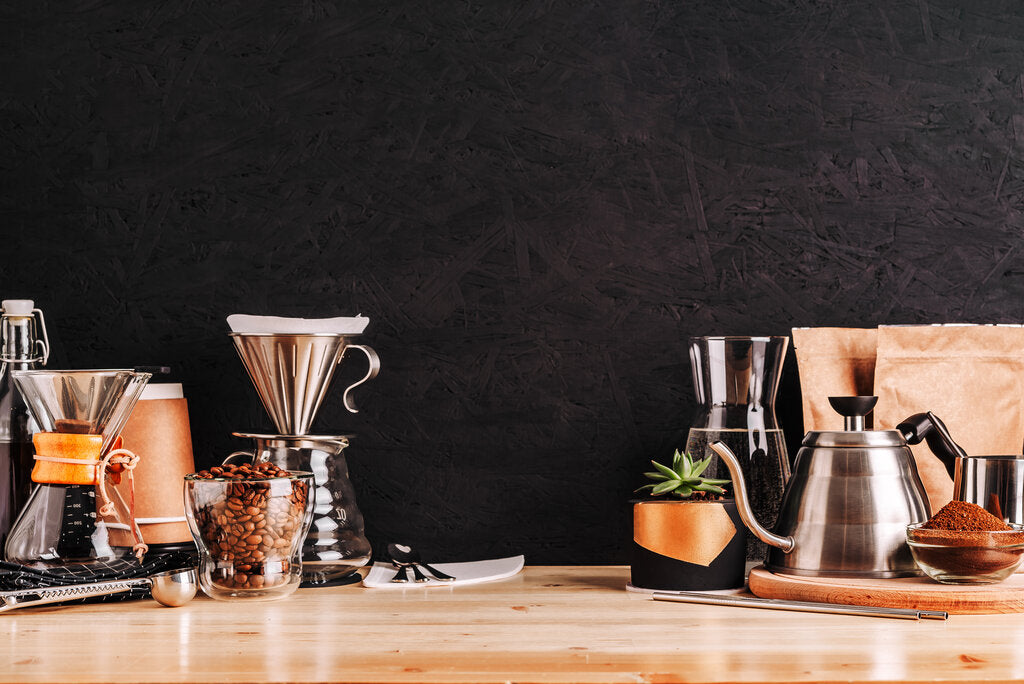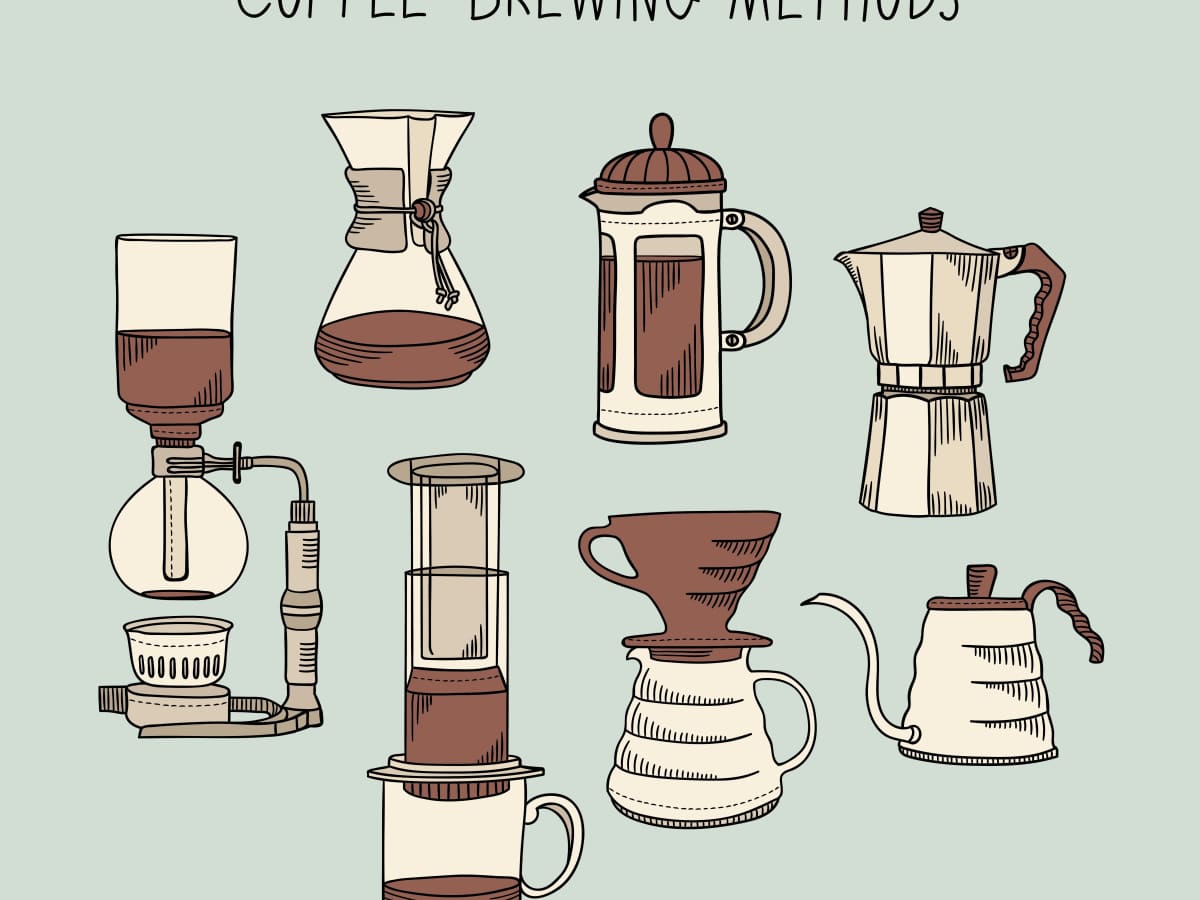Coffee Brewing Methods Debunked: From French Press to Cold Mixture
Coffee Brewing Methods Debunked: From French Press to Cold Mixture
Blog Article
The Science Behind Coffee Brewing: How Temperature and Time Affect Your Beverage
Understanding the science behind coffee brewing reveals that temperature level and time are not mere variables yet pivotal components that determine the drink's taste profile and general high quality. The ideal brewing temperature level generally falls in between 195 ° F and 205 ° F, while the period of removal varies substantially across different methods. This interaction of aspects can lead to a cup that is either delightful or disappointing. As we check out the nuances of these components, the inquiry develops: how can one efficiently balance temperature level and time to achieve that perfect mixture?
The Chemistry of Coffee Extraction
The chemistry of coffee removal delves right into the elaborate procedures that transform raw coffee beans right into the aromatic drink appreciated worldwide. This improvement mainly entails the solubility of different substances present in the beans, which are affected by factors such as grind dimension, water quality, and the developing method utilized.
Throughout the brewing procedure, warm water serves as a solvent, removing soluble compounds, consisting of high levels of caffeine, sugars, acids, and lipids, from the coffee grounds. Each compound adds to the taste profile, scent, and body of the final drink. Acids are liable for brilliant and zesty notes, while oils add to a rich mouthfeel.
The extraction procedure is not uniform; different substances dissolve at different rates. The preliminary phases of brewing remove acids and sugars, resulting in a pleasant level of acidity, while prolonged extraction can bring about anger due to over-extraction of unfavorable substances. Comprehending these chemical communications is important for enhancing developing strategies, as the equilibrium in between removal time and water temperature level can considerably influence the general high quality of the coffee. Eventually, grasping the chemistry of coffee extraction is essential to accomplishing a delicious and all-round mug.
Ideal Developing Temperatures
Finding the appropriate developing temperature level is necessary for opening the complete possibility of coffee tastes and fragrances - coffee brewing methods. Study indicates that the ideal array for developing coffee exists between 195 ° F to 205 ° F(90 ° C to 96 ° C) Within this variety, the removal process properly liquifies the preferable soluble substances in coffee beans, bring about a flavorful and well balanced cup
Brewing at reduced temperature levels, such as listed below 195 ° F(90 ° C ), may cause under-extraction, generating an acidic and weak brew with muted tastes. On the other hand, brewing at temperature levels surpassing 205 ° F(96 ° C) can lead to over-extraction, generating a severe and bitter taste as a result of the extreme dissolution of undesirable substances, such as tannins.
Moreover, the perfect brewing temperature level can differ relying on the coffee bean kind and roast level. Lighter roasts usually benefit from somewhat greater temperatures to improve their intricate taste profiles, while darker roasts may be much better suited to lower temperature levels to mitigate bitterness.
Ultimately, maintaining precision in brewing temperatures is vital for attaining a harmonious balance of tastes, guaranteeing that every cup of coffee provides an enjoyable sensory experience.
Impact of Brewing Time
Brewing time plays a critical function in identifying the taste account and general high quality of coffee. The extraction procedure, which affects the preference, scent, and body of the drink, is mainly reliant on exactly how long the coffee grounds touch with water. Much shorter developing times can lead to under-extraction, bring about a weak or sour taste, as insufficient soluble substances are liquified. On the other hand, extended brewing can result in over-extraction, where unfavorable substances are launched, causing an astringent or bitter taste.
Ideal brewing time differs depending upon linked here the method made use of and the grind size of the coffee. For circumstances, a French press normally needs concerning 4 mins, while coffee removal is generally completed within 25 to 30 secs. It is important to adjust brewing time in conjunction with other variables, such as water temperature level and coffee-to-water proportion, to accomplish the preferred flavor profile.
Recognizing the impact of developing time allows coffee fanatics to fine-tune their brewing methods, inevitably improving the sensory experience of their cup (coffee brewing methods). With careful interest to this variable, one can open the full potential of the coffee, revealing its special attributes and nuances
Developing Approaches and Their Results

For instance, approaches like French press and cold brew enable a much longer steeping time, causing a fuller body and durable taste as a result of boosted removal get redirected here of oils and soluble solids. Alternatively, espresso brewing uses high stress and a shorter removal time, producing a concentrated shot that stresses intense flavors and an abundant crema.
Pour-over techniques, such as Chemex or V60, provide an even more regulated extraction procedure, permitting the brewer to manipulate circulation price and water distribution, which can enhance brightness and clarity. Percolation methods cycle water through the coffee grounds numerous times, leading to a stronger, frequently bitter taste.
Lastly, using paper filters versus steel filters can also affect the final preference; paper filters typically generate a cleaner mug by trapping oils and great fragments, while steel filters permit more oils to go through, adding to a fuller mouthfeel - coffee brewing methods. Understanding these nuances can elevate the coffee experience significantly
Tips for Improving Your Mixture
A well-executed brew can change even the easiest coffee right into an amazing experience. Grind the beans simply prior to brewing to take full advantage of quality, making certain the work dimension matches your developing method-- coarser for French press and finer for espresso.
Water quality plays an essential function; use filteringed system water without pollutants. The perfect developing temperature ranges between 195 ° F and 205 ° F(90 ° C to 96 ° C ) As well warm can burn the coffee, while also trendy may under-extract tastes.
Timing is just as important. For immersion methods, soaking for three to 5 minutes is ideal, whereas drip methods commonly take about 5 mins. Try out mixture times to find your preferred strength.

Verdict
In recap, the elaborate relationship between temperature and time is extremely important in the coffee developing procedure. Following ideal developing temperature levels in between 195 ° F and 205 ° F, together with accurate timing tailored per approach, ensures the desired taste account is attained. Recognizing these scientific concepts equips people to refine their brewing methods, eventually resulting in a much more balanced and delightful coffee experience. Proficiency of these variables is crucial for any kind of coffee fanatic looking for excellence in their beverage.
Understanding the scientific research behind coffee brewing reveals that temperature level and time are not simple variables however pivotal components that determine the beverage's taste profile and total high quality. Recognizing these chemical communications is important for optimizing developing methods, as the balance in between extraction time and water temperature level can considerably influence the total high quality of the coffee.Brewing time plays a crucial function in identifying the taste account and overall top quality of coffee. By focusing on these components-- bean high quality, grind size, water temperature level, steeping time, and proportion-- you can elevate your coffee developing procedure, resulting in a constantly exceptional cup.
In recap, the elaborate relationship in between weblink temperature and time is extremely important in the coffee brewing procedure.
Report this page